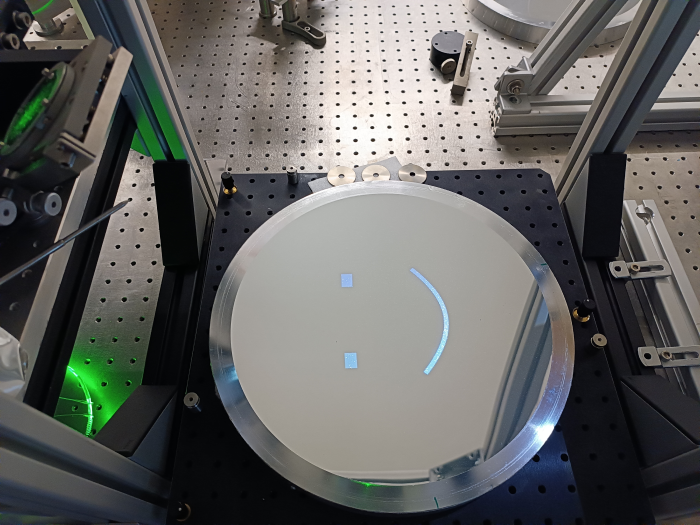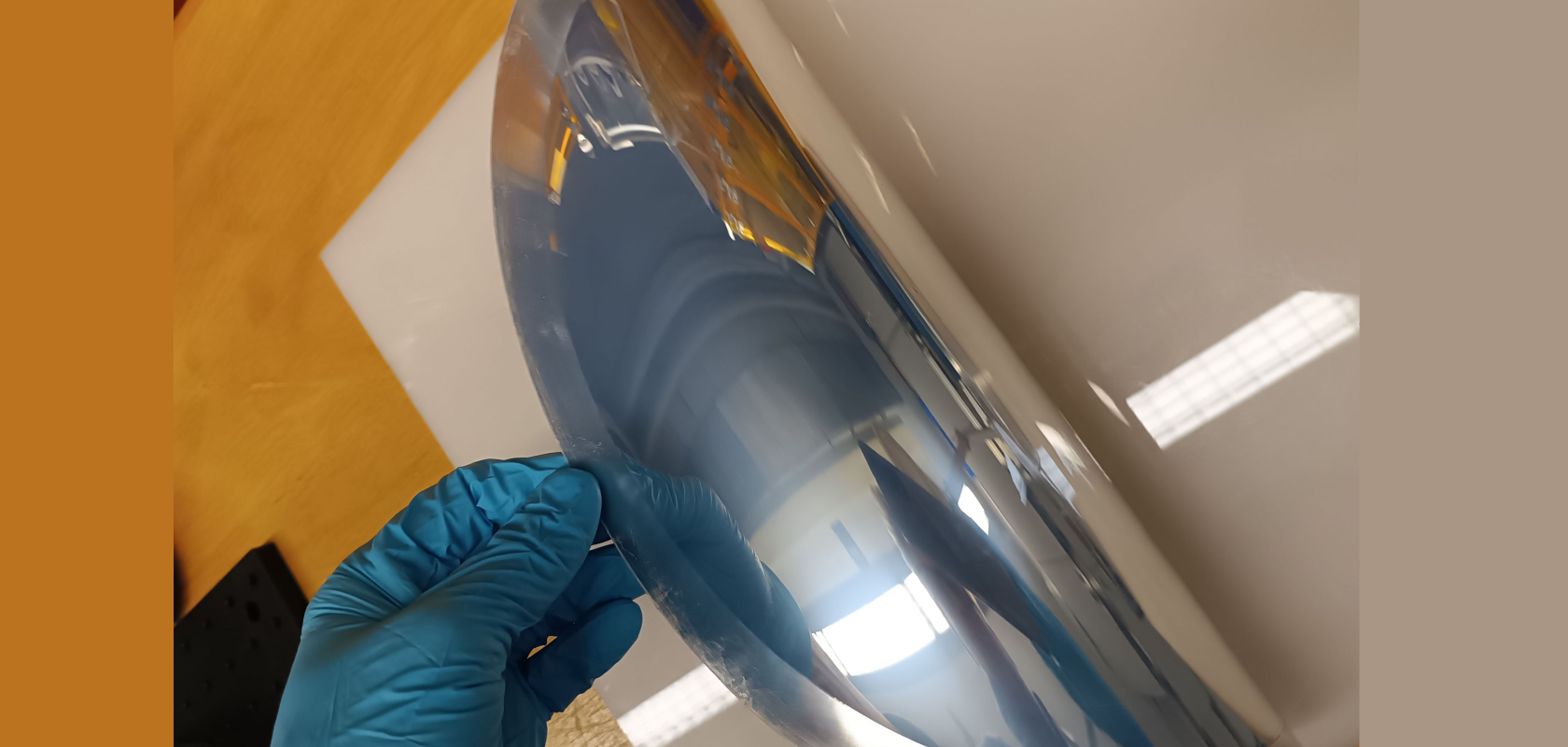Researchers have devised a new method for fabricating large, high-quality mirrors for space telescopes that are thin enough to be rolled up and stored inside a launch vehicle.
In Applied Optics, the scientists describe their creation of 30cm-diameter parabolic membrane mirror prototypes using chemical vapour deposition, growing them on a rotating liquid inside a vacuum chamber. A heating method has also been developed to adaptively correct imperfections that might occur after the mirror is unfolded.
The prototypes are much thinner than the primary mirrors previously deployed in space telescopes, and could be scaled up to similar sizes.
"Launching and deploying space telescopes is a complicated and costly procedure," said Sebastian Rabien from Max Planck Institute for Extraterrestrial Physics in Germany. "This new approach – which is very different from typical mirror production and polishing procedures – could help solve weight and packaging issues for telescope mirrors, enabling much larger, and thus more sensitive, telescopes to be placed in orbit."
While the work only demonstrates the feasibility of the new fabrication methods, it lays the groundwork for larger packable mirror systems that are less expensive, according to Rabien.
"It could make lightweight mirrors that are 15 or 20 metres in diameter a reality, enabling space-based telescopes that are orders of magnitude more sensitive than ones currently deployed or being planned," he explained.
Chemical vapour deposition (CVD) is commonly used to apply coatings such as the ones that make electronics water-resistant. According to Rabien, this is the first time the technique has been used to create parabolic membrane mirrors with the optical qualities suited to astronomy. A rotating container filled with a small amount of liquid was added to the inside of a CVD vacuum chamber. The liquid forms a perfect parabolic shape onto which the polymer can grow, forming the mirror base. When the polymer is thick enough, a reflective metal layer is applied to the top via evaporation and the liquid is washed away.
"It has long been known that rotating liquids that are aligned with the local gravitational axis will naturally form a paraboloid surface shape," said Rabien. "Utilising this basic physics phenomenon, we deposited a polymer onto this perfect optical surface, which formed a parabolic thin membrane that can be used as the primary mirror of a telescope once coated with a reflecting surface such as aluminium."

Chemical vapour deposition was used to grow the membrane mirrors on a rotating liquid inside a vacuum chamber.
Although other groups have created thin membranes for similar purposes, these mirrors are typically shaped using a high-quality optical mould. By using a liquid to form the shape, the researchers have developed a much more affordable technique that can be easily scaled up to larger sizes.
In order to reshape the membrane mirror once it has been unfolded post-launch, the researchers have also developed a thermal process that uses a light-induced localised temperature change to enable adaptive shape control that can bring the thin membrane into the desired optical shape.
The new membrane-based mirrors could also be used in adaptive optics systems – used to improve the performance of optical systems by using a deformable mirror to compensate for distortion in incoming light. Because the surface of the new membrane mirrors is deformable, these mirrors could be shaped with electrostatic actuators to create deformable mirrors that are less expensive to make than those created with conventional methods.
Next, the researchers plan to apply more sophisticated adaptive control to study how well the final surface can be shaped and how much of an initial distortion can be tolerated. They also plan to create a metre-sized deposition chamber to better study the surface structure and packaging and unfolding processes for a large-scale primary mirror.
Images: Sebastian Rabien, Max Planck Institute for Extraterrestrial Physics


